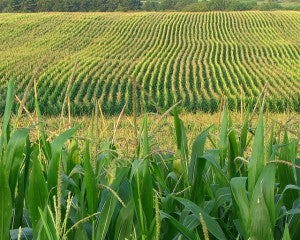
Farmers must estimate how much fertilizer and other inputs their crop will need in the face of increased weather variability.
Nitrous oxide might not make the news like carbon dioxide, but it’s a powerful hidden force behind the extreme, climate-driven weather we’re experiencing. This super-pollutant is the third most significant greenhouse gas, with a warming impact almost 300 times greater than carbon dioxide. Lowering it is essential for avoiding the most dangerous climate impacts.
The newly released “Global Nitrous Oxide Assessment” confirms a sobering reality: atmospheric concentrations of the gas are rising faster than previously anticipated. The majority of nitrous oxide emissions come from synthetic fertilizer and manure. Yet nitrogen applications are also essential for producing the crops that feed a growing population.
We don’t have to choose between food security or climate stability. We can and must support farmers in achieving both priorities.
Reducing nitrous oxide emissions isn’t just possible — it’s within reach.
A combination of existing strategies could slash global nitrous oxide emissions by over 40%, but scaling these solutions requires commitment and innovation, but scaling these solutions requires commitment and innovation.










 The Paris Climate Agreement included a special emphasis on food security and the threats it faces from extreme weather events. Despite only brief mentions of agriculture in the preamble to the agreement itself, a recent
The Paris Climate Agreement included a special emphasis on food security and the threats it faces from extreme weather events. Despite only brief mentions of agriculture in the preamble to the agreement itself, a recent